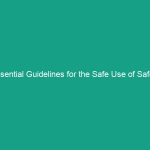Good Morning Team!
Today, we’re diving into an important topic: Essential Confined Space Attendant Duties: Monitoring and Communication. This discussion is crucial for ensuring Safety in our work Environment, especially when dealing with confined spaces. Understanding these duties helps protect not just you, but also your colleagues.
Understanding Essential Confined Space Attendant Duties
Confined space attendants play a vital role in ensuring Safety during operations in confined spaces. Their primary responsibilities include monitoring the environment and maintaining effective communication between the workers inside the space and those outside. This role is essential because confined spaces can present significant Hazards, including toxic gases and limited oxygen levels.
Many people might think that the confined space attendant merely observes the situation. However, their duties extend far beyond that, involving proactive engagement in Safety Measures. By understanding the full scope of these duties, we can enhance our safety protocols significantly.
Key Hazards, Risks, and Safety Considerations
Working in confined spaces presents unique hazards that require careful monitoring and communication. Some of the key risks include:
- Air Quality Issues: Toxic gases, low oxygen levels, and flammable atmospheres can pose life-threatening risks.
- Physical Hazards: Limited space can lead to slips, trips, and falls, as well as equipment-related injuries.
- Equipment Malfunction: Failure of safety equipment can exacerbate risks, making it crucial to monitor all systems actively.
- Inadequate Communication: Miscommunication can lead to serious accidents, especially in emergency situations.
Ignoring these hazards can have real-world consequences, including injuries, fatalities, or even legal repercussions for the company. It is essential to be vigilant and proactive in identifying and mitigating these risks.
Best Practices, Procedures, & Actionable Advice
To ensure safety while performing the duties of a confined space attendant, consider the following Best Practices:
1. Continuous Monitoring
Keep a constant watch on the atmosphere within the confined space. This includes:
- Using gas detection equipment to monitor air quality.
- Regularly checking oxygen levels to ensure they remain within safe limits.
- Being aware of any changes in the environment that could indicate new hazards.
2. Effective Communication
Establish clear lines of communication between workers inside the confined space and those outside. This can involve:
- Using two-way radios or other communication devices.
- Implementing hand signals or visual indicators in noisy environments.
- Regular check-ins to confirm all parties are safe and situation is stable.
3. Emergency Preparedness
Always have an emergency plan in place. This includes:
- Having rescue equipment ready and accessible.
- Conducting regular drills to ensure everyone knows their roles in an emergency.
- Reviewing and updating emergency Procedures regularly.
4. Training and Education
Regular Training sessions are essential. Employees should:
- Attend confined space training to understand risks and safety protocols.
- Be familiar with the Operation of safety equipment.
- Participate in discussions about recent safety incidents or near misses to learn from them.
Real-Life Example
Let’s consider a case study where a confined space attendant noticed a drop in oxygen levels during a routine monitoring check. Thanks to effective communication with the workers inside, they were able to evacuate promptly, avoiding potential asphyxiation. This scenario emphasizes the importance of vigilance and communication.
Regulations, Standards, and Compliance
Understanding and adhering to safety Regulations is critical in ensuring a safe working environment. The following Standards are particularly relevant:
- OSHA Regulations: osha has specific guidelines regarding confined spaces, including the requirement for monitoring and communication.
- ISO Standards: Compliance with ISO standards related to health and safety can enhance safety protocols.
- Company Policies: Always align with your organization’s specific safety policies and procedures.
Compliance not only protects employees but also safeguards the company from potential liabilities.
Employee Engagement & Discussion
Engaging in discussions about Confined Space Safety can enhance our understanding and application of these principles. Here are some questions to consider:
- What safety challenges have you encountered related to confined spaces?
- How can we improve our communication during confined space operations?
- What additional training do you think would be beneficial for our team?
Feel free to share your thoughts and experiences on these topics. Your insights are valuable in shaping our safety practices.
Conclusion & Key Takeaways
To wrap up, the role of a confined space attendant is crucial in monitoring and communication to ensure Workplace Safety. Key takeaways include:
- Be vigilant in monitoring air quality and environmental conditions.
- Establish clear and effective communication methods.
- Prepare for emergencies and ensure all team members are trained.
- Adhere to relevant safety regulations and company policies.
By prioritizing these practices, we can create a safer work environment for everyone. Thank you for your attention and commitment to safety. Let’s make sure we all return home safely at the end of the day!


